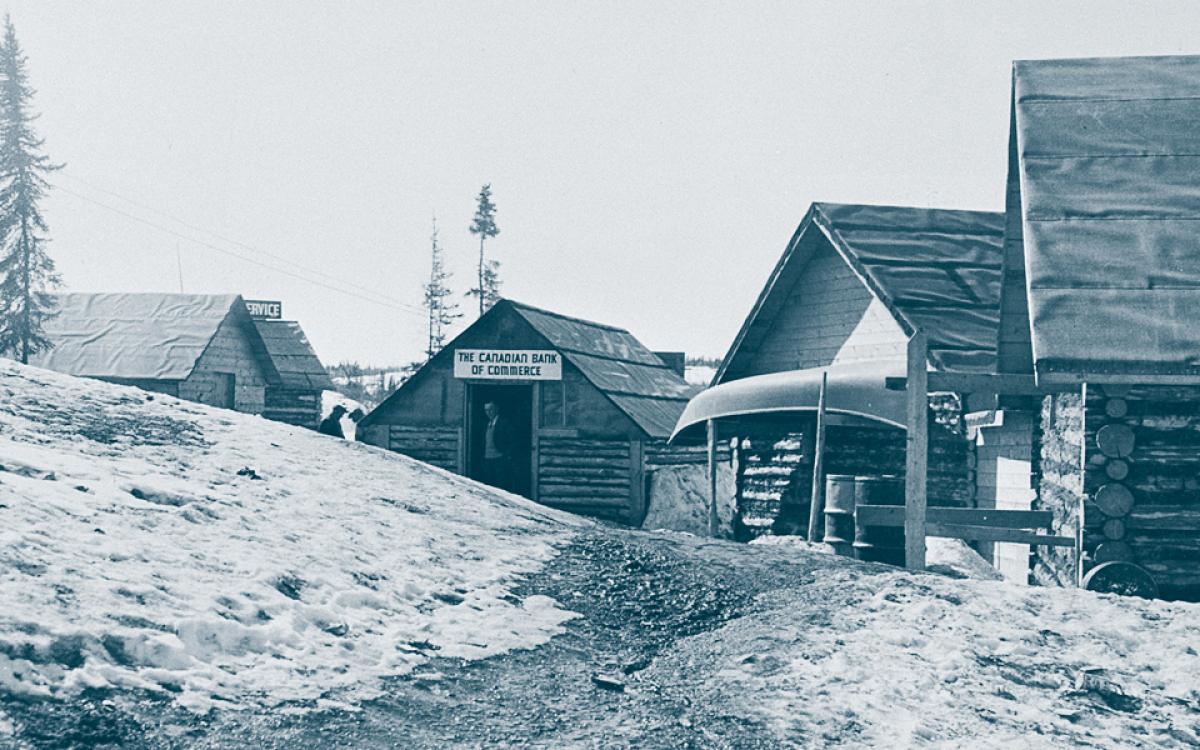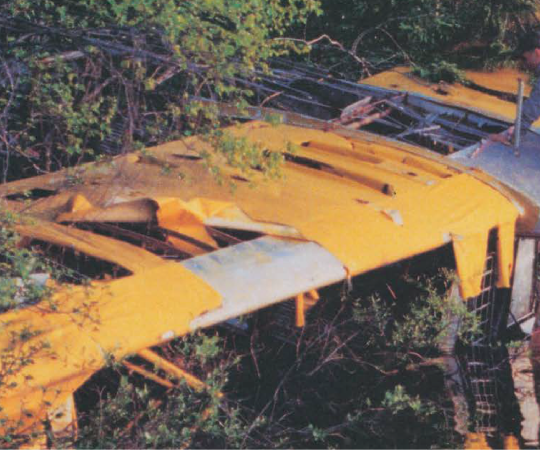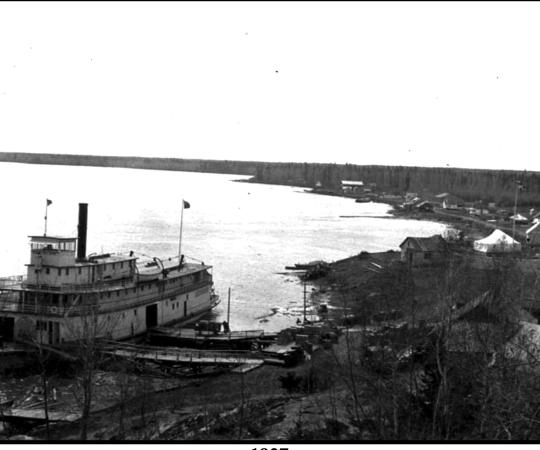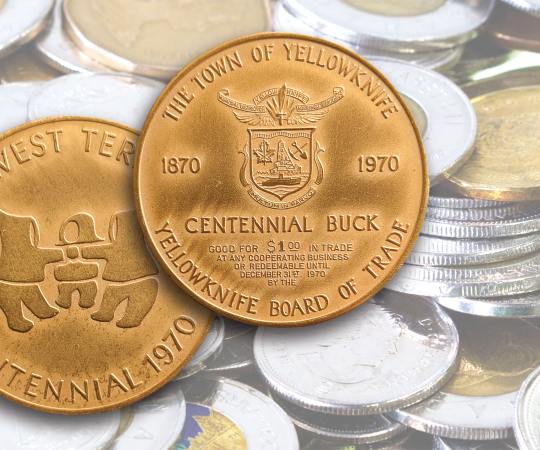Malcolm Peacock woke in a cold sweat, and it wasn’t just from his hangover. Anxiously sorting through blurry memories of the previous night’s boozin’ and burglarin’, he couldn’t recall if he’d cleaned his fingerprints off the safe. He knew how cops worked – after all, he used to be one – and decided he needed to go back and give that safe a thorough wipe down. Peacock’s head pounded in pace with his heart as he sped off in his taxi cab.
It was October 1949 and for weeks, Peacock had been watching construction progress on the new Imperial Bank of Commerce in Yellowknife. He cased the joint, hatched a plan and when the safes moved in, he'd spring into action. The scheme was simple: break through the thin construction wall, bash open the big walk-in safe with a crowbar and sledgehammer and take off with the loot. That was his first dumb idea. His second was to think that doing it drunk would make it easier.
When RCMP officers arrived on the scene, the flimsy temporary wall at the back of the bank was broken down. It was a mess inside; files were scattered and furniture knocked over. And something heavy had been dragged across the floor that left deep parallel gouges leading right out the door and onto the street. Of the bank’s two safes, one was gone, and the larger, walk-in vault was banged-up, unmoved – and still locked.
Then the constables received a call from a man who had been out for an early morning walk around a small lake near town. Along a stretch of beach, he stumbled across a disturbed area in the sand, poked at it with the toe of his boot and uncovered a cloth bag. Inside were rolls of fifty-cent coins, $250 worth in total. Mysteriously, investigators also found a magazine in the bag, a Scandinavian publication “devoted to art and pictures of the nude female form.” Only there wasn’t much art left in this particular magazine; almost all of the pictures had been clipped out.
Meanwhile, on the other side of town, miners heading out for their morning shift at Con Mine had gathered around a battered safe left on the side of the road. Already spread between two crime scenes, the small town police crew were short-handed and could only send two men in a single squad car out to Con Road. The miners had trampled the snow around the safe, destroying any footprint evidence, but on the road, the police located some distinctive tire tracks: those made by special low-pressure tires.
With the miners long gone, the two cops wondered how they were going to lift 180 kilograms of battered evidence into the trunk of their car on their own. That’s when a cab rolled down the road towards them and they flagged it over. The cabbie introduced himself as Malcolm Peacock, told them he used to be a cop and that he’d love to help. He bent down to grab a corner of the safe but was stopped and given a pair of gloves to wear.
Fresh sweat broke out on Peacock’s brow and it wasn’t just from straining to lift the safe. As he was about to drive away, he could see one of the officers inspecting deep scratches on the rear bumper of his cab. The other cop poked at the broken door handle then bent over to examine Peacock’s new tires: they were the low-pressure variety.
Back at the bank, the manager informed police that the missing safe contained only rolled coins and documents. He told them that the steel box weighed more than 180 kilograms: More than one person must have pulled it out onto the street. Beside the curb, police discovered a broken car door handle and more distinctive tire tracks.
There were only a couple of shops in Yellowknife that sold automobile parts and the cops found one that had recently brought in five pairs of special low-pressure tires, all of them installed on cabs in town.
Their defence was simple: they were too drunk to know any better.
When the cops convened to compare notes, all evidence pointed to Malcolm Peacock, so they sped off to his cabin in Old Town. When he answered the door and saw the uniforms, Peacock's spirits sunk: He regretted helping the officers on Con Road. And giving out his name was pretty stupid too.
Peacock was swimming in evidence. The linoleum on the floor of his cabin was deeply gouged and speckled with black paint chips that matched the colour of the safe. The clincher: His walls were decorated with magazine clippings of nude European women.
The cops arrested Peacock and his cabbie housemates Terrence Rodinsky and Alexander Suzach. Standing in front of the territorial magistrate, the evidence against them was overwhelming, so they chose to plead guilty and pray for the mercy of the court.
Their defence was simple: they were too drunk to know any better. Their only hope was that by telling the whole story, and emphasizing the really idiotic parts, they would prove that their reasoning had been heavily fogged by booze and that punishment should be light.
Their story started innocently enough. Peacock, Rodinsky and Suzach had spent a quiet Sunday evening sharing a bottle of rum. Suzach passed out early and by the time the others drank half of a second bottle they figured it was time to get rich. Grabbing a few basic tools as they stumbled out the door, they fired up the cab and headed up the hill to Yellowknife’s New Town.
If getting into the bank was easy, breaking into the walk-in safe was another matter, they explained. The sledgehammer was too small, the pry bar was too short and they were too inebriated. An hour of banging, prying and cursing got them nowhere and the sun was starting to rise. Peacock decided that they needed more time, so they dragged the small safe out the front door and across the sidewalk. Wrestling the safe towards the trunk, they broke off one of the cab’s door handles and gouged the rear bumper. They tried lifting, but it was too heavy for two men.
Leaving the safe out on the road, Peacock and Rodinsky sped back down the hill to wake Suzach from his drunken stupor, and in short order they got the safe down to their cabin. It only took a couple of hours and the rest of the rum to get it open, but the contents – rolls of fifty-cent coins and some bank papers – were a big disappointment.
They figured having pockets full of coins, not to mention the battered safe in their living room, was too incriminating. Peacock and Rodinsky dumped the safe in a ditch on Con Road while Suzach stuffed the coins in a bag and headed out to bury it in the sand beach of a city lake. How the Scandinavian art magazine got into the bag remains a mystery.
Peacock only stopped to help the police lift the safe into their patrol car so he could spread more of his fingerprints: a clever alibi. Then they gave him gloves.
Their defence, being too drunk to know any better, didn’t wash with the magistrate. He sentenced Suzach to a year in jail – his role in the crime was minimal. Rodinsky got two and a half years, while Peacock was given three. Then the magistrate paused, and tacked on an extra six months because Peacock used to be a police officer.










